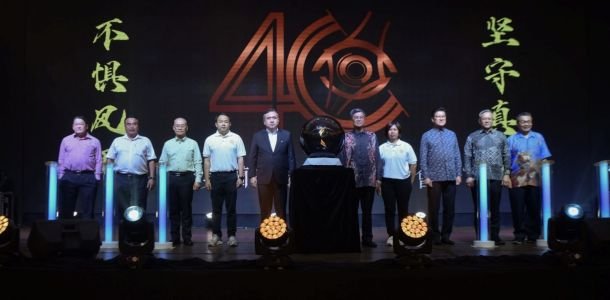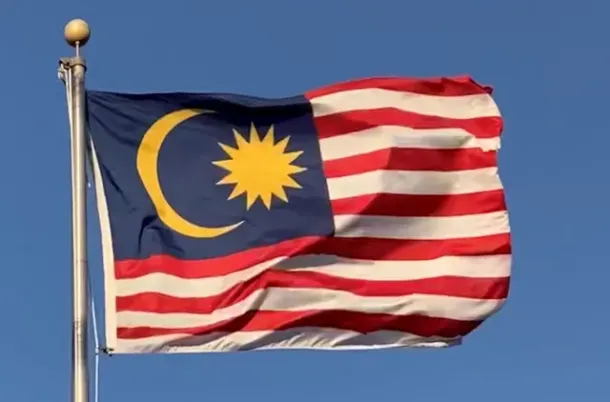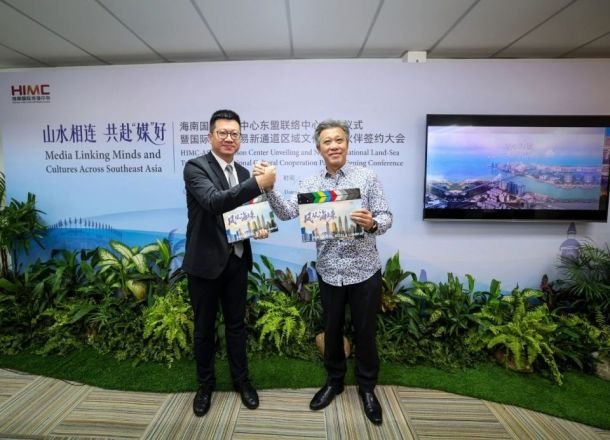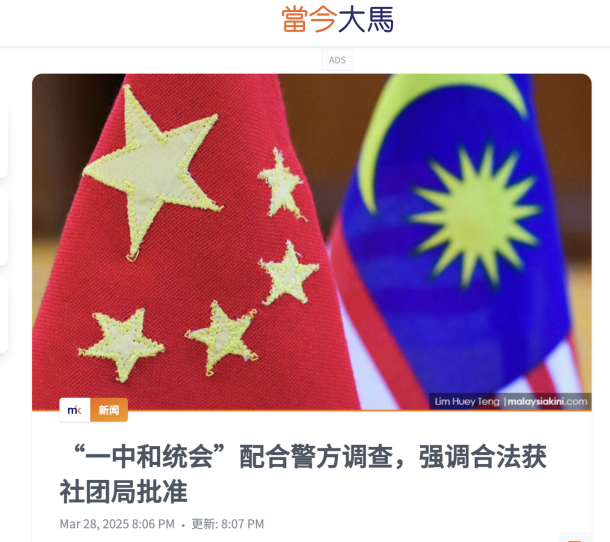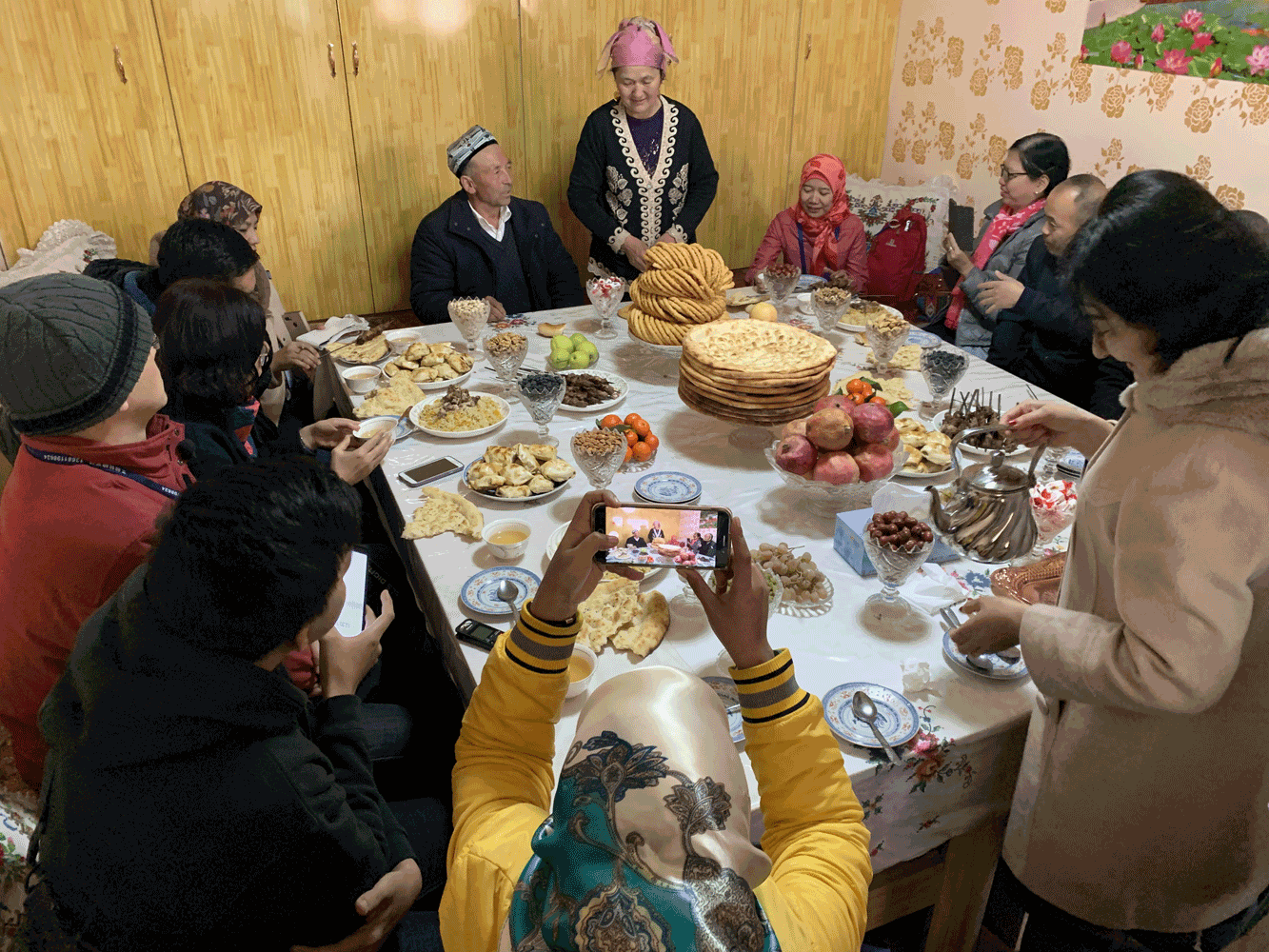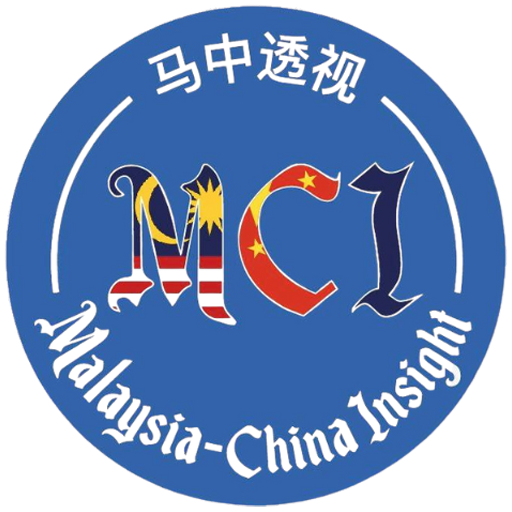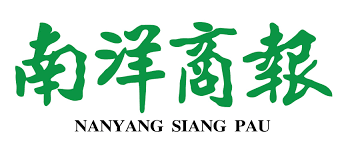Malaysia
Sinosphere
Ethnic Chinese in Malaysia, currently numbering 6.8 million, make up 22.9 percent of the country’s total population, and have a substantial role to play in an ethnic-organized political landscape that is still dominated by a Malay majority. Given its large and long-standing Chinese population — with principal languages including Hakka, Cantonese and Hokkien (and Mandarin making some headway more recently) — Malaysia has the most vibrant Chinese-language media landscape outside of the PRC and Taiwan. While media consumption habits are changing rapidly, newspapers have remained a fixture of the market, with the average daily circulation of the country’s 14 Chinese-language newspapers reaching 900,000, and a pass-along readership (according to the Audit Bureau of Circulation) reaching approximately 2.7 million readers, or about one-third of the Chinese population. Malaysian Chinese media also have a strong sense of history and independence. The daily Kwong Wah Yit Poh (光華日報) has distinction as Malaysia’s oldest Chinese-language newspaper, having been founded on December 20, 1910, by Chinese revolutionary Sun Yat-sen (孫中山). In addition to print outlets, there are both Chinese-language television and radio — and Facebook and WhatsApp have dominated as social media and messaging services.
Climate & Challenges
Journalism and media in Malaysia have historically been challenged by political restrictions, including a strict content censorship system. While these challenges have moderated in notable ways over the past decade, they remain a concern. In 2024, Malaysia dropped 34 places in RSF’s World Press Freedom Index to 107th place. Nevertheless, it received the second-highest ranking among the nations of Southeast Asia, following Thailand’s placement at 87th.
Over the past 75 years, the Malaysian Government has imposed a fairly strict content censorship system, with laws governing all aspects of the media industry. These include: The Sedition Act of 1948; the 1998 Communications and Multimedia Act (Section 233); the Film Censorship Act; and the Printing Presses and Publications Act of 1984. The government has continued to apply the Sedition Act to restrain speech, particularly that seen critical toward the country’s revered sultans. In March 2024, a Malaysia human rights advocacy group called for the repeal of the act, saying its vague standards are a clear infringement on basic rights to freedom of expression: “It does not define what constitutes conduct with a ‘seditious tendency,’” said the head of the rights group, “nor for any of the other terms used such as ‘hatred,’ ‘contempt,’ ‘discontent’ and ‘disaffection.’”
Despite its still thorny press-related laws and sometimes arbitrary enforcement, Malaysia has made some important steps in the right direction over the past decade. This has included a 2012 amendment to the Printing Presses and Publications Act, which brought a marginal relaxation of restraints on the media — particularly, the elimination of a requirement that print media submit a fresh application each year for a publishing permit from the country’s Ministry of Interior. In March 2024, Malaysia’s home minister said the government would take concrete steps toward amending the Sedition Act, having said the previous year that changes would be made to ensure the law was used only to prosecute those who insulted members of the royal family.
Media-Related Legislation in Malaysia
| Legislation | Chinese | Purpose |
|---|---|---|
| Sedition Act 1948 | 1948年煽動法令 | Originally enacted by the colonial authorities of British Malaya to stem communist insurgence in 1948, the act is now applied to control speech with “seditious tendency” or engendering “feelings of ill-will and hostility between different races.” |
| Malaysian Communications and Multimedia Commission Act 1998 | 马来西亚通信和多媒体委员会法令1998 | Regulates the multimedia industries and convergence media, often in ways that are expansive and overly broad, including intrusive investigatory powers that challenge the protection of journalistic sources. |
| Printing Presses and Publications Act 1984 | 1984年印刷機器出版法令 | Controls publications of all types, whether printed in the country or imported from abroad. It grants the Home Affairs Minister “absolute discretion” in awarding, revoking or suspending print permits. |
| Film Censorship Act 2022 | 電影檢查條例 | Specifies harsh punishments for anyone producing or distributing film materials that are pornographic or “otherwise are against public decency,” but includes vague language and is subject to arbitrary enforcement that can stifle creative freedom. |
Other issues of concern in the Malaysia media landscape include flagging public trust in the reliability of media reporting — necessitating, some say, the formation of an independent media council and a robust code of ethics — as well as close political affiliations in key media, struggling commercial viability for legacy print media, and the rising impact of social media platforms, including Facebook, WhatsApp and TikTok. Social media platforms are an important source of news and information in Malaysia, which has also been a leading regional source of Chinese-language fake news produced by so-called “content farms” (内容农场), which rely on plagiarism, rewriting, and even fabrication of news with sensational headlines to boost the viewership. A 2018 report by the Taiwanese media outlet Global Views (遠見) found that at least 80 percent of writers and streamers working for content farms were Malaysian.
Top Social Media and Messaging Platforms – Malaysia
Roughly half of Malaysians report using both Facebook and WhatsApp for news consumption.
| Rank | Platform | For News (%) | Overall Usage (%) |
|---|---|---|---|
| 1 | 51 (-1) | 70 | |
| 2 | 45 (-2) | 77 | |
| 3 | YouTube | 37 (-2) | 71 |
| 4 | 24 (-) | 47 | |
| 5 | TikTok | 24 (+9) | 42 |
| 6 | 18 (-4) | 27 |
Data reflects percentage of survey respondents who use each platform for news consumption and overall usage. Numbers in parentheses indicate year-over-year change from 2022. Survey conducted in early 2023.
Domestic Chinese-Language Outlets
While the media sector in Malaysia is changing rapidly, legacy print publications and their online derivations remain influential. The Malaysian newspaper sector is mainly dominated by Media Chinese International (世界華文媒體), or “Media Chinese,” a public limited company listed in both Hong Kong and Malaysia. Media Chinese International publishes what for the Chinese-language segment are known as the “Big Four newspapers” (四大报): Sin Shew Daily (星洲日報), China Press (中国报), Nanyang Siang Pao (南洋商报), and the Guang Ming Daily (光明日報). The country’s second major media group is the Kai Tak Hong Newspaper Group, publisher of the Oriental Daily News (東方日報) newspaper, which in recent years phased out its print edition to focus on online media, and See Hua Daily News (诗华日报), which is focused mainly on the Malaysia state of Sarawak in the northwest of the island of Borneo. There are also several Chinese-language papers focusing on the Sabah state in northern Borneo, bordering Brunei, including the Morning Post (晨报), Asia Times (亞洲時報), and Overseas Chinese Daily News (华華僑日報), or “Wah Kiu Yat Po.”
In the online news space, while Malaysiakini (當今大馬), also known as Malaysia Now, focuses mainly on English-language content. But its Chinese version maintains a relatively strong audience. Launched in 1999 by Premesh Chandran and Steven Gan, the outlet has pushed the envelope on uncensored journalism with its simple motto “news and views that matter.” Other online media include The Malaysian Insight (透视大马), a direct competitor to Malaysia Today; The Interview (访问网), a hybrid media product launched in late 2018 including in-depth Chinese-language text and video interviews with a range of figures from Malaysian society; the video news platform Pocket News (百格时事), which offers short and in-depth news videos as well as interviews on politics, business and current affairs; and CCN (精彩大马), a Chinese-language news platform launched by the Malay Mail English-language newspaper.
Finally of note are Chinese-language television networks and programs in Malaysia, including “8 News” (八度空间华语新闻), a free-to-air television network which broadcasts Chinese-language news at regular intervals, though its staple is entertainment content, such as dramas, from Hong Kong, China and Taiwan; Bernama TV Chinese (马新社华语新闻), which since July 2018 has broadcast Chinese-language news on Monday-Friday in the evenings; and several programs under the Astro AEC general Chinese-language network, including “Reporting the News” (新闻报报看), “Hotspot” (热点Hotspot) and “Prime Talk” (八点最热报).
Lines of PRC Impact & Engagement
Given the strong ties of culture, language and business between the Malaysian Chinese community and the People’s Republic of China, there are many instances in which media and associated individuals in Malaysia either pay lip service to PRC positions in the name of shared values, which may also be rooted in economic ties or dependencies, or have genuine, if complex, affinities and sympathies. In addition to these lines of influence, there are clear instances of direct engagement by China with the domestic Chinese-language media — primarily through diplomatic missions, which are quite active, and state-owned PRC media.
Soft Ties and Sympathies
On the more complicated question of shared interests and identities, it can be noted that Malaysian Chinese news audiences have tended in recent decades to have what some characterize as a “Greater Chinese complex” (大中華情意結) — meaning that they derive some level of emotional support from the idea of a powerful China with which they have a cultural affinity. Some argue that this “complex” has faded as Malaysian Chinese have become more integrated in Malaysian society, but it arguably has driven Chinese-language media in Malaysia toward views on issues such as the Tiananmen Massacre, Taiwan and Tibetan sovereignty, and so on, that are aligned with the Chinese government. Media have also tended to avoid reporting on more sensitive Chinese social issues, and have prioritized instead reporting on China’s rapid economic development, its scientific and technological advancements, and its challenges to the hegemonic behavior of the United States.
Malaysia Press Freedom Timeline
Key Events Shaping Media Landscape (1948-2025)
Sedition Act Enacted
Legal Foundation:
- Still in force 77 years later
- Penalties up to 20 years imprisonment
- “Seditious tendency” remains undefined
Media Blackout During Race Riots
Complete Control:
- 196 official deaths, ~600 diplomatic estimates
- Complete government censorship imposed
- Parliament suspended until 1971
Printing Presses and Publications Act
Licensing Control:
- Annual permits required until 2012 amendment
- PM can revoke licenses anytime
- No appeal or judicial review allowed
Operation Lalang Mass Arrests
Authoritarian Consolidation:
- The Star, Sin Chew Jit Poh, Sunday Star, Watan suspended
- Media adopts self-censorship post-release
- Mahathir consolidates authoritarian control
Anwar’s Dismissal Sparks Alternative Media
Digital Revolution:
- Mainstream media censors Anwar story
- Sangkancil mailing list, Freemedia emerge
- Reformasi movement demands transparency
Malaysiakini Launches Independent Online News
Testing Boundaries:
- MSC protection promises no internet censorship
- Pushes press freedom limits consistently
- Chinese version maintains strong audience
Oriental Daily News Suspended After One Issue
Immediate Suppression:
- Political pressure suspected for suspension
- MCA party-linked warnings to vendors
- Ban eventually lifted in December 2002
Chinese Media Monopoly Solidified
First Major Website Blocking
Digital Censorship Begins:
- Breaks MSC 10-point guarantee on internet freedom
- “Insensitive” reader comments cited as reason
- Sets precedent for future online censorship
The Heat Weekly Suspended Over Najib Coverage
Political Targeting:
- Critical coverage of government expenditure
- Indefinite ban with no clear timeline
- PM’s family spending becomes sensitive topic
The Edge Suspended Over 1MDB Reporting
Corruption Coverup:
- US$1.83 billion allegedly siphoned from 1MDB
- Whistleblower sites blocked nationwide
- “False reporting” claimed despite evidence
Anti-Fake News Act Passed
Election Weapon:
- Passed just before GE14 election
- Minister cites revival of 1MDB coverage
- Later repealed by new government in 2018
Malaysiakini Fined for Reader Comments
Platform Liability:
- Five reader comments critical of judiciary
- Malaysian law doesn’t require comment moderation
- Sets worrying precedent for all media outlets
Persistent Press Freedom Challenges
Economic and business interests can also result in a strong pull on Chinese-language media to be more restrained when reporting on China in particular — especially when media owners, as is often the case, have wider trade interests. One prominent case in point is the Sarawak timber and media tycoon Tan Sri Datuk Tiong Hiew King (张晓卿), the founder and chairman of Rimbunan Hijau Group, a multinational logging company. Tiong is a Timur businessman from Sarawak, the Malaysian state on the island of Borneo, where he resides. Tiong purchased the Sin Chew Daily in April 1988, and in 1995 bought Hong Kong’s Ming Pao newspaper from entrepreneur Yu Pun-hoi (于品海). Finally, in 2004, Tiong purchased Nanyang Siang Pao, a longstanding newspaper launched in 1923. Tiong Yi Jia often publicly expresses a sense of mission on the issue of Chinese cultural sentiment (中華文化情懷), and through media outlets in the group, he often counters criticism by voicing his solidarity with Chinese culture against what he characterizes as the hegemony of Western discourse. He has also been active in the expansion of Sin Chew Daily into the Chinese overseas communities of Cambodia, Thailand, and other countries in Southeast Asia. Reporting on Tiong’s Media Chinese International in 2016, the independent media outlet Initium, now based in Singapore, interviewed one source who said Tiong had acquired Chinese-language media primarily because of his own sense of mission for Chinese culture. The source pointed out that media outlets such as Nanyang Siang Pau, Asia Weekly, and Ming Pao Monthly have long been loss-making ventures and faced pressure from the government — and yet Tiong insisted on keeping the businesses.
Hard Approaches
In recent years, the PRC has worked to foster closer relationships with Chinese-language media in Malaysia through two primary means. The first and most active dimension is direct state engagement with media, including both executives and editorial teams. This has happened through three basic methods: [1] direct interaction between Malaysian Chinese media and diplomatic personnel from PRC embassies and consulates; [2] organization of Chinese-language media through forums such as the Global Chinese Media Forum (全球華人媒體論壇), an initiative directly backed by the official China News Service, which falls under the United Front Work Department of the CCP; [3] efforts by Chinese officials to connect with and enlist Chinese-language media by organizing various training sessions (培訓班).
The second dimension is cooperation and engagement by PRC state media such as Xinhua News Agency and China News Service with Malaysian domestic Chinese-language media — including visits, training sessions, content sharing and so on. Media Chinese International and Xinhua News Agency have collaborated on numerous projects over the years. In July 2015, for example, a top Xinhua representative visited the offices of Sin Chew Daily (星洲日报) to discuss editorial cooperation (漖务) with the top editors of all four of Malaysia’s largest Chinese-language newspapers.
For examples of the various forms of cooperation and engagement between China and Malaysian media and media-related organizations, see our Activity Reports for Malaysia.


